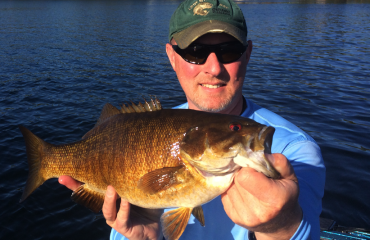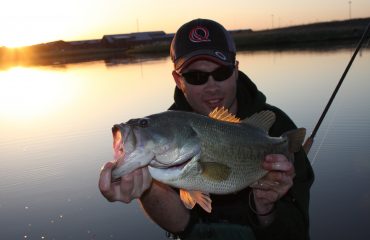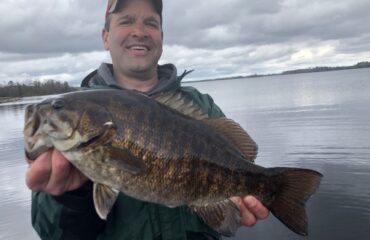It’s Okay to Harvest [some] Bass
A significant cold front blew through one morning in late-July, changing the trajectory of our trip with my guide customer Bjorn and his two young boys. Smallmouths were laying low, and disengaged. We had more than 6 hours of fishing time remaining.
“Our smallmouths don’t seem willing to bite. I hope tonight’s fish fry won’t be our highlight of the day!” I announced.
And then a new idea came about. I asked my three anglers if they’d be willing to bail on smallmouths and go fishing for food instead. It was a Friday after all, and they’d be hosting a fish fry later that night.
“This will be so entertaining and worthwhile,” I assured them.
Not only would we be catching loads of overabundant largemouths from another nearby lake, but this was a rare instance I’d be allowing everyone in my boat, including myself, to keep a limit of 5 bass.
At the next lake, we all caught our limits within the next 90-minutes. Taking 20 largemouths from 9 to 12 inches length. And in the process, we did the lake a favor.
Welcome to Fridays in Wisconsin, where walleyes and panfish are no longer necessary for fulfilling fish fry dreams.
It would truly help a lot of overrun waters if most 9 to 12 inchers like these (where allowed) get removed more often. Many of which are waters they don’t belong at. The lake we were on was once formerly a trout, walleye and smallmouth factory, now overrun by these pests.
It’s acceptable to harvest bass, and a number of waters now need your help.
How Did Bass Populations Explode?
It’s more than acceptable to harvest bass where stunting and infestations are now a problem.
I encourage you to do this on waters where applicable and it’s insisted on. In fact, the Wisconsin DNR insists of it.
In 2013, nearly 20 years following the creation of Wisconsin’s original black bass management plan, biologists realized largemouth bass populations were exploding state-wide at an alarming rate, taking over fisheries where native muskies and walleyes once proliferated over the biomass. Consequently, harvesting largemouths became legal year-round.
When these largemouth bass harvest regulations were enacted that winter, I about flipped like most other catch-and-release oriented anglers. But then quickly accepted the benefits of being able to harvest a very abundant fish species for consumption year-round, and within reason, and only if they met prime “eater status”.
According to Vilas County, WI senior fisheries biologist, Eric Wegleitner, a number of factors led to the open harvest season on largemouths in Wisconsin.
 “Changes in harvest regulations (e.g., minimum length limit, season closures), angler behavior (i.e., increase in angler release rates), and environmental changes (e.g. increasing growing degree days, changes in aquatic vegetation) are all factors influencing largemouth bass (LMB) numbers. Increases in LMB numbers can have negative effects such as decreased growth, decreased size structure of populations, and decreased maximum growth potential (i.e., trophy potential).”
“Changes in harvest regulations (e.g., minimum length limit, season closures), angler behavior (i.e., increase in angler release rates), and environmental changes (e.g. increasing growing degree days, changes in aquatic vegetation) are all factors influencing largemouth bass (LMB) numbers. Increases in LMB numbers can have negative effects such as decreased growth, decreased size structure of populations, and decreased maximum growth potential (i.e., trophy potential).”
Wegleitner was assigned to Vilas County in 2020, so he was not around when the current largemouth harvest regulations were implemented. “It was likely recognized that largemouth bass populations were on the rise, catch and release was extremely high, and there were concerns about interactions with walleye that may be causing decline in their numbers,” he says. “The increased density of LMB was having a negative impact on growth rates and population size structure,” he summarizes.
When one species explodes in number, stunting of that species becomes a problem. This is now plaguing a number of waters in Wisconsin where former fisheries consisting of low numbers of larger bass evolved into thousands of smaller bass.
“Higher density populations experience stunting as more individuals are competing for finite resources. The low productivity of many northern WI lakes makes the stunting phenomenon more likely. Changes in largemouth bass density can be related to habitat change, changes in angler behavior, or a combination of both,” he explains.
Likewise, the removal of a lake’s biggest fish contributes to future stunting and overpopulating problems. This is problematic for many fisheries.
“Continuous harvest of large individuals will cause the size structure of a population to be skewed smaller, as larger fish are cropped off. This concept is straight forward and obvious. If you are wondering whether genetics contribute to growth rates of individual fish or if bigger bass help control size structure through predation, I cannot say for certain. I don’t recall any research that concludes either for LMB.”
Now 10 years later, Wegleitner admits these largemouth bass regulations have not been working. Likewise, I’ve observed a lot of largemouth lakes become worse and further overpopulated.
“This largely due to the catch and release rates being so high. From 1991 to 2011 the percentage of LMB released rose from roughly 80% to over 95%. We continue to see these kind of high release rates in the majority of lakes. This is one of the issues we have that really limits the effectiveness of management through regulation. We can liberalize regulations and try to encourage harvest, but it seems difficult to get people to harvest.”
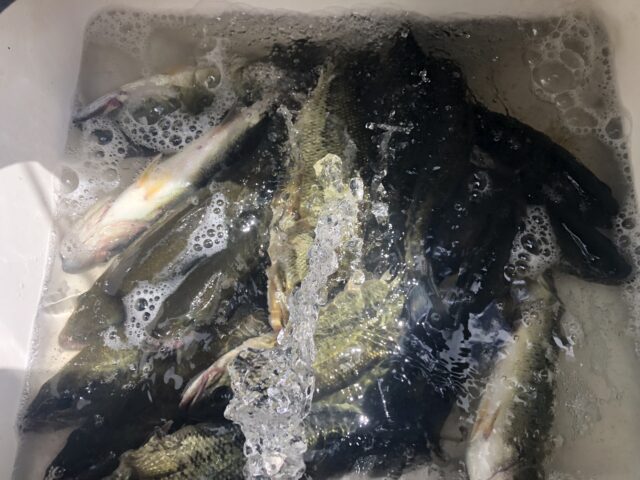
Angler Attitude Changes are Needed
The thought of harvesting bass may seem unappetizing, so serious sport anglers aren’t receptive of it. Meanwhile those who love to eat fish love it. How could we change angler attitudes from a fish consumption standpoint, that it is OKAY to harvest some bass for food nowadays?
“This is a tough question to answer,” says Wegleitner. “If we had the answer, we would be doing it. On a local level, I think identifying specific lakes that are having issues and getting the messaging out to local stakeholders is important. Creating fishing events that encourage harvest and end in a fish fry could be a good tool to get people harvesting and also a way for them to see how tasty smaller largemouths can be. I think the bass angling community can help change people’s habits, as they did a good job creating the catch and release mentality in the past. As a kid I was an avid largemouth bass angler and spent a lot of time watching all the best bass fishing TV shows. Those shows helped enforce that catch and release philosophy with me.”
Harvesting more bass instead of walleyes and big panfish will greatly benefit these species and their lakes, it seems. With the harvest and removal of bass we’re seeing improved size structures of largemouths now across several inland lakes that includes the Minocqua Chain. The removal of many stunted small bass has helped improve fish sizes, and also aided in the reestablishment of its walleye fishery.
Whenever we harvest largemouths, we like to do so in colder water temperatures and ONLY the lakes where we can take out a limit of 5 at personally more appetizing 10-to-12-inch lengths rather than larger 14” minimum. I also like to take my customers wanting fish to these waters where we could take our 3–4-man limits at any time and experience an entertaining day on the water.
Wegleitner agrees, “It would be best practice to harvest smaller LMB and release the larger ones.”
Every angler’s philosophy should be to release all trophy fish. However, many anglers and locals (not knowing any better) are taking advantage of the open season by continually harvesting trophy fish because now they can and the writing says they can. Big fish have got to stay in the systems and remain.
Shouldn’t we want to harvest the highly abundant, younger and fresher eater size 3- and 4-year-old fish rather than ancient 15- to 20-year-old fish?
“Focus your harvest effort on smaller individuals and let the larger ones go to continue to grow,” Wegleitner suggests.
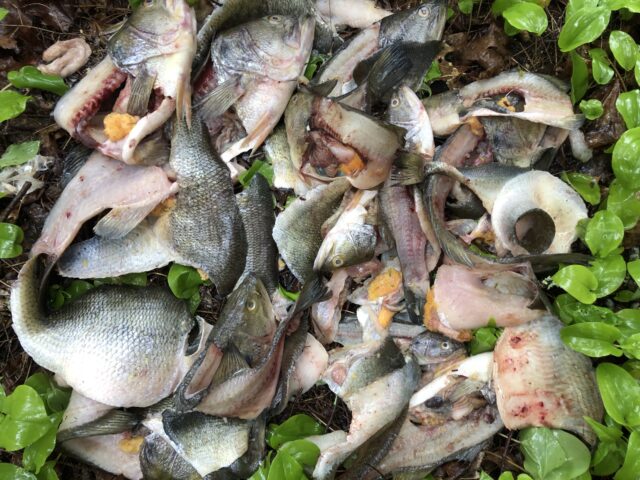
I found this at a boat landing last year. While this is good, what I didn’t like about it was that some of these fish appeared 18 to 19-inches, which are considered trophies in the north. On lakes and fisheries they historically never belonged in, moderate harvest like this is welcomed. Never feel bad about it either, as largemouth bass are prolific breeders.
Management Headaches
The open season on largemouths makes it legal to harvest 5 fish at 14-inch minimum lengths across most waters. A one-size-fits-all statewide management umbrella like this cannot work for all lakes, however. Growing seasons vary from north to south. Every lake has a different type and quality of bass fishery. Small lakes can be decimated quickly, while trophy waters and their special fisheries are now vulnerable to this harvest, which seems very unfair.
“We have a variety of special bass regulations that are used on individual waters where data suggests other regulations may be beneficial,” says Wegleitner. “There are no minimum length limits put on lakes with high density LMB populations. We also have more restrictive regulation such as an 18” minimum that are used in waters where trophy bass can be produced; generally, for smallmouth bass (SMB) in this area. They are also lakes that have a protected 14-18” slot that encourages the harvest of smaller fish, with the idea of improving a population’s size structure.”
In Wisconsin’s northern zone, it seems black bass management would be better executed on an individual lake-by-lake basis. With management limited to publicly-accessible waters only.
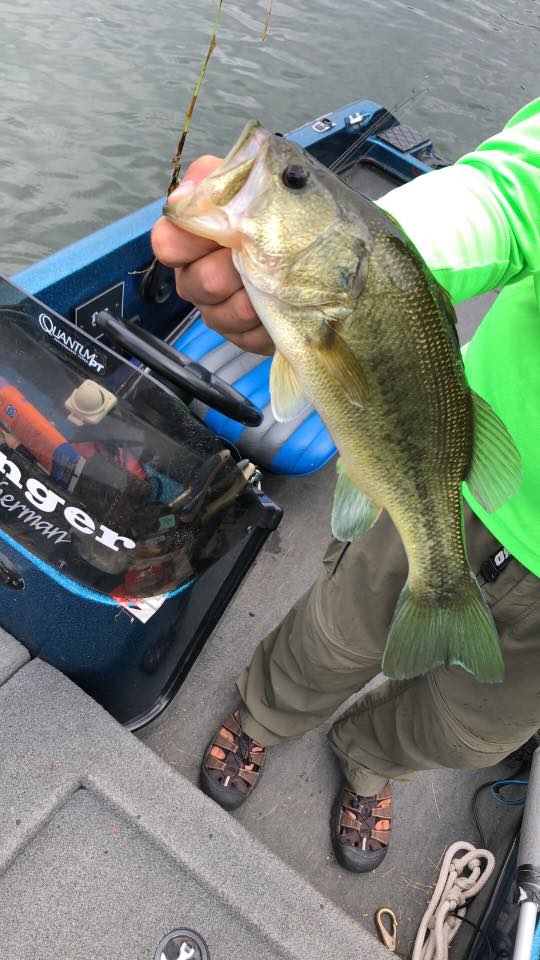 First, anything over 14” is not classified to be of good eating quality. These fish are slow-growing and kind of old up here. Second, anything over this length is an up-and-comer, which absolutely needs to remain in the system but taking one instead of five is much better. Third, current regulations are written to promote the allowable maximum harvest, which includes trophies. Absolutely DO NOT kill the trophy fish. Removal of trophies and other prized gamefish is what escalated these problems. Last, many of these waters actually have far less adult, keeper status fish and are overpopulated with a high abundance of 9-to-12-inch fish. This size class and abundance of bass are the reasons you should want to harvest and enjoy.
First, anything over 14” is not classified to be of good eating quality. These fish are slow-growing and kind of old up here. Second, anything over this length is an up-and-comer, which absolutely needs to remain in the system but taking one instead of five is much better. Third, current regulations are written to promote the allowable maximum harvest, which includes trophies. Absolutely DO NOT kill the trophy fish. Removal of trophies and other prized gamefish is what escalated these problems. Last, many of these waters actually have far less adult, keeper status fish and are overpopulated with a high abundance of 9-to-12-inch fish. This size class and abundance of bass are the reasons you should want to harvest and enjoy.
Implementing protected slots could be the future to fixing the overabundant bass problem, but individual lakes must first be identified for candidacy, and it will greatly depend on anglers actually keeping fish. “The idea behind a protected slot is to encourage harvest of smaller LMB which will reduce density dependent growth problems as well as protecting larger fish from harvest with the hope of getting them to trophy class size.”
Biologists like Wegleitner adapt to the times and are always receptive to angler and stakeholder feedback, and openminded to revisions in regulations. “An important part of fish management is the ability to change direction as you gather data and learn more,” he says. “As our fisheries professionals learn more, we will continue to have conversations and consider possible changes that will help us in managing the resources of Wisconsin,” he adds.
“There are some scenarios where changes to LMB regulations and increased harvest may have positive impacts on the overall health of a waterbody. However, our ability to influence fish populations may be limited when environmental and habitat changes have more dramatic impacts on a system. We are seeing these shifts happen in some of our northern waters where walleyes are in decline, while bass are increasing in numbers. Trends in harvest do not help when walleye anglers remain harvest oriented and bass anglers maintain a catch and release mentality. Changes in angler behavior could help regulate population dynamics, but it is likely that other factors may ultimately define what the future of our fisheries look like.”
Grocery Shopping on Action Lakes
Largemouths are prolific breeders and the trajectory for their populations is pointing upwards unlike walleyes and muskies that are trending downwards. Unlike bass, their sustenance is becoming more reliant upon stocking dollars.
From lake-to-table, focus your catch and cook efforts on the deep, clear waters in summertime.
Choose waters that can best support harvest, advises Wegleitner. “If you look at the special fishing regulations by county in the Wisconsin Hook and Line Fishing Regulations book and see any no minimum length limits for bass, these are almost certainly lakes where we are encouraging LMB harvest.”
Personally, I encourage the harvest of stunted bass from these local waters: Big Carr, Katherine, North Nokomis, Tomahawk, Minocqua, Kawaguesaga, Shishebogama, Gunlock, Brandy, High, Fishtrap, Upper & Lower Bucktabon. Additionally, some of these fisheries could also benefit of some removal of their stunted smallmouth bass too.
For the preparations to begin, bleed them out as soon as you leave the lake. Get them on ice as quickly as possible.
They are excellent and delicious deep fried, blackened, or grilled.
If the fish have been handled and prepared well, you’ll be very satisfied on Friday nights.
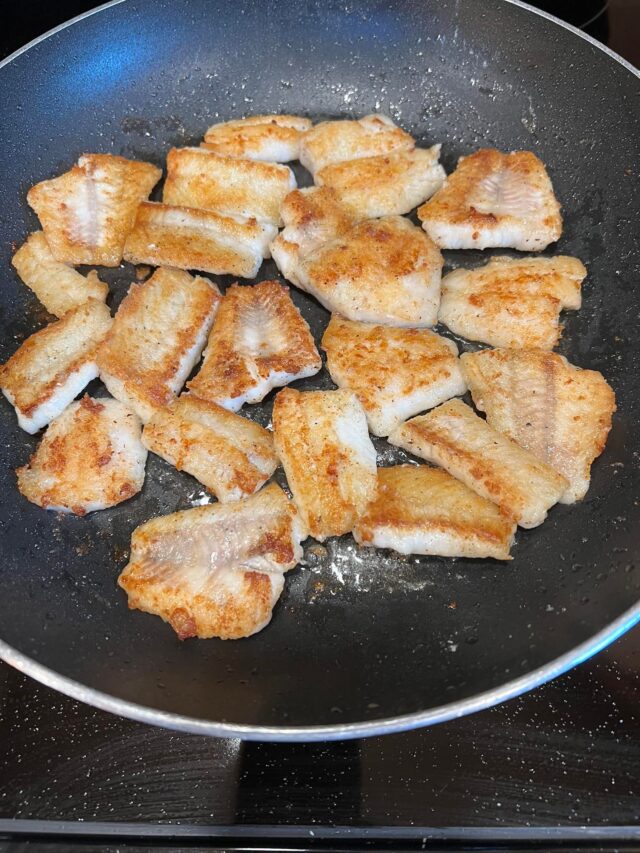
By selectively harvesting largemouth bass on ONLY the infestation lakes, you’ll be enjoying a sustainable and prolific resource, while greatly helping improve the bass size structure and overall health of the food chain. These fisheries issues don’t plague Wisconsin waters only.
Whenever I fish a lake that needs a thinning of its overpopulated & stunted bass population, we’re glad to take a limit to eat. Not enough anglers are doing it. More anglers need to do the lakes a service by harvesting some bass.

My sincerest thanks to Eric Wegleitner of the WIDNR for his insights and interview. Senior Fisheries Biologist – Vilas County, Wisconsin. eric.wegleitner@wisconsin.gov
Andrew Ragas splits time between the Chicago area and Wisconsin’s Northwoods. Based in Minocqua, WI, he specializes in trophy bass fishing and offers guided trips from May thru October. While big bass is the passion, he dabbles in multi-species as well. He may be visited online at www.northwoodsbass.com




